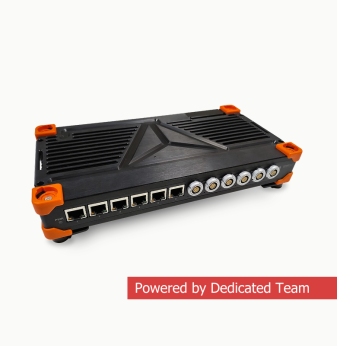Advanced RF Coexistence Strategies in Multi-Radio Embedded Systems

Introduction: Why RF Coexistence Matters More Than Ever
The demand for wireless connectivity in embedded devices has exploded. Whether in consumer electronics, automotive systems, or industrial IoT, modern products often integrate multiple radios such as Bluetooth Low Energy (BLE), LTE, Ultra-Wideband (UWB), Wi-Fi, and Zigbee. However, when multiple transceivers operate in overlapping frequency bands or close physical proximity, RF interference and performance degradation become critical issues.
In this article, we explore the core challenges and advanced strategies for ensuring RF coexistence in embedded systems that incorporate BLE, LTE, and UWB. We’ll cover antenna design considerations, time and frequency coordination, filtering techniques, and software-level solutions to help you deliver robust, interference-resilient products.
The Challenge of Co-Located Radios
RF coexistence issues arise when two or more wireless systems operate in similar or overlapping frequency ranges or use the same physical space for antennas. Here’s how BLE, LTE, and UWB can interfere:
- BLE (2.4 GHz ISM band): Vulnerable to Wi-Fi and microwave interference.
- LTE (700 MHz – 2.6 GHz): Can overlap with BLE in upper bands; high-power cellular transmission may saturate nearby receivers.
- UWB (3.1 GHz – 10.6 GHz): Uses very low power and wide bandwidth, but can be sensitive to nearby harmonics or spurious emissions.
If unaddressed, these overlaps can lead to:
- Reduced signal sensitivity (blocking or desensitization)
- Increased packet loss and retransmissions
- Dropped connections and poor user experience
- Elevated power consumption due to retransmission
Long-tail keyword example: "How do BLE and LTE interfere in compact embedded designs?"
Answer: BLE and LTE may share overlapping frequencies in the 2.4 GHz band. When placed close together, an LTE transmitter can generate harmonics or high-energy signals that saturate the BLE receiver, causing packet loss and connection instability. This is particularly critical in compact designs where antenna isolation is minimal.
Hardware-Level Coexistence Strategies
1. Antenna Isolation and Physical Separation
- Use different antenna types (PCB trace, ceramic, chip) for each radio.
- Separate antennas by at least λ/4 of the lowest frequency used.
- Incorporate grounded shields or metal walls for spatial isolation.
2. Bandpass and Notch Filtering
- Add SAW/BAW filters tuned to each radio’s operating band.
- Notch filters can block harmonics or nearby bands (e.g., LTE blocking for BLE).
- Use duplexers or diplexers in shared RF chains.
3. RF Switches and Multiplexers
- Dynamically enable/disable transceivers to prevent concurrent transmission.
- RF switches reduce front-end complexity but increase timing overhead.
4. Front-End Module (FEM) Selection
- Choose FEMs with coexistence filtering and gain stages.
- Consider low-noise amplifiers (LNAs) with strong out-of-band rejection.
Long-tail keyword example: "What RF filters help reduce interference between UWB and BLE modules?"
Answer: Surface Acoustic Wave (SAW) or Bulk Acoustic Wave (BAW) filters are effective in isolating BLE transmissions in the 2.4 GHz band from UWB systems operating above 3 GHz. Notch filters specifically tuned to block BLE frequencies can also be used to protect UWB signal integrity.
Firmware & Software Coordination Techniques
1. Time-Division Multiplexing (TDM) and Scheduling
- Coordinate access to the RF chain using custom TDM protocols.
- Prioritize radios based on latency, data rate, or application priority.
2. Radio Activity Signaling (RAS) Protocols
- BLE and Wi-Fi coexistence frameworks use shared GPIO or software signals to announce transmission.
- Implement software-based arbitration layers for LTE and UWB.
3. Dynamic Power Control and Adaptive Data Rates
- Reduce transmit power to minimize interference zones.
- Adjust modulation schemes to tolerate higher noise floors.
4. Real-Time Operating System (RTOS) Integration
- Use RTOS timers and task priorities to coordinate radio stack execution.
- Leverage hardware abstraction layers (HAL) for context-aware scheduling.
Long-tail keyword example: "How to schedule BLE and UWB transmissions in embedded systems?"
Answer: Scheduling can be handled using an RTOS that assigns different task priorities to BLE and UWB radio drivers. BLE connections can use connection intervals and slave latency, while UWB transmissions can be slotted using time-triggered events. Developers may implement a coexistence manager that gates radio activity based on timing constraints and latency tolerance.
Case Study: BLE + LTE + UWB on a Shared Platform
Let’s take a typical embedded design with:
- BLE for device pairing and control
- LTE for cellular data uplink
- UWB for indoor localization
Potential Problems:
- BLE and LTE compete in the 2.4 GHz range.
- UWB’s weak signal could be masked by LTE harmonics.
- Simultaneous transmission increases peak current draw and noise.
Best Practices:
- Place BLE and UWB antennas orthogonally to reduce coupling.
- Use an LTE FEM with strong harmonic suppression.
- Implement a software scheduler to pause BLE scans during LTE TX bursts.
- Design PCB with strict isolation between RF domains.
Long-tail keyword example: "How to isolate BLE and UWB antennas in space-constrained PCBs?"
Answer: In miniaturized designs, BLE and UWB antennas should be placed with orthogonal polarization and separated using ground planes or RF shielding cans. Using ceramic antennas and FEMs with filtering capabilities can help reduce space while maintaining isolation.

RF Coexistence Testing and Validation
Before production, it’s critical to validate your coexistence strategy with:
- EMC Chamber Testing: Measure emissions and desensitization effects.
- Coexistence Stress Testing: Simulate peak usage (e.g., LTE data + BLE streaming + UWB burst).
- Time/Frequency Domain Analysis: Use tools like spectrum analyzers and logic analyzers.
- Anechoic Chamber Field Testing: Evaluate real-world signal performance.
- Thermal Profiling: Identify hotspots caused by concurrent radio activity.
Long-tail keyword example: "How to test RF coexistence in an embedded wearable device?"
Answer: Use an EMC lab to perform conducted and radiated emissions testing while the wearable is running typical communication scenarios. Include interference stress tests with overlapping BLE and LTE transmissions. Validate UWB performance in a multipath environment such as an anechoic or reflective chamber.
Summary: Engineering Reliable Multi-Radio Devices
To succeed in markets like smart wearables, connected vehicles, or industrial tracking, developers must account for RF coexistence from day one. It’s not enough to verify each radio in isolation — real-world performance depends on how well they share spectrum, power, and PCB layout.
By combining smart hardware layout with software arbitration and validation testing, you can ensure that BLE, LTE, and UWB can coexist — not compete.
Why Promwad?
Promwad provides full-stack design services for wireless embedded devices, including:
- Multi-radio hardware layout and antenna design
- Embedded firmware for radio scheduling and coexistence
- Pre-certification EMC/EMI testing support
- Integration with BLE, LTE-M/NB-IoT, Wi-Fi, UWB, Zigbee, and more
- RTOS and Linux-based firmware architecture
- Testing and debugging under real-world environmental constraints
Let’s build embedded systems where wireless just works.
Our Case Studies








